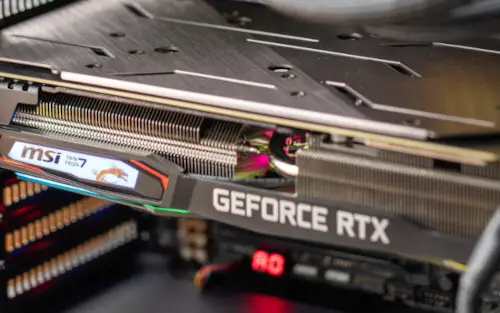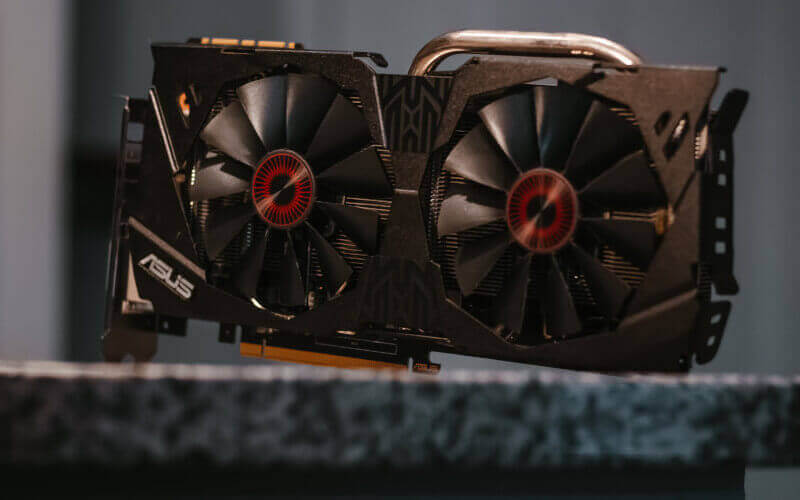Are you a gamer who’s ever wondered about the temperature of your graphics processing unit (GPU) while playing games? As someone who loves gaming, I understand how crucial it is to have a smooth and uninterrupted gaming experience. One factor that plays a significant role in this is the temperature of your GPU.
GPUs are essential components of modern computers and play a critical role in ensuring that games run smoothly and look great. However, GPUs can generate much heat, especially during intensive gaming sessions. This heat can cause performance issues and damage your GPU if not appropriately managed.
That’s why it’s crucial to understand a normal GPU temperature while gaming and how to monitor and control it. In this article, we’ll look closer at GPU temperature, what’s considered normal, and how to prevent overheating.
So, let’s get started and learn how to keep our GPUs running cool and smooth.
Understanding GPU Temperature
Before we get into what’s considered a normal GPU temperature while gaming, it’s important to understand what GPU temperature is and how it’s measured.
GPU temperature is the measure of how hot your graphics card is running. It’s typically measured in Celsius (°C) or Fahrenheit (°F), and it can vary based on various factors, including the GPU model, ambient temperature, and workload.
There are a few different ways to measure GPU temperature. The most common method is to use a software utility that provides real-time temperature readings, such as MSI Afterburner, HWMonitor, or GPU-Z. These programs can also provide other information about your GPU, such as fan speed, memory usage, and clock speed.
It’s important to note that different GPUs have different temperature ranges. Some GPUs can handle higher temperatures than others, so what’s considered normal for one GPU might be too high for another.
Additionally, the load on your GPU can also affect its temperature. Higher GPU load, such as when playing graphics-intensive games, will cause your GPU to run hotter than when idle.
Monitoring your GPU temperature is a good idea to ensure it stays within safe levels. Overheating can cause damage to your GPU and lead to performance issues. The next section will look at a normal GPU temperature while gaming.
Normal GPU Temperature While Gaming
Now that we’ve covered what GPU temperature is and how it’s measured let’s talk about what’s considered a normal GPU temperature while gaming.
As I mentioned earlier, what’s considered a normal GPU temperature can vary depending on the GPU model and workload. However, in general, most modern GPUs are designed to operate at 65°C to 85°C (149°F to 185°F) while gaming.
If your GPU is running at temperatures above 85°C, it’s a good idea to take steps to cool it down. This can include increasing fan speed, improving airflow in your case, or even investing in a more robust cooling solution like a liquid cooler.
On the other hand, if your GPU is running at temperatures below 60°C (140°F) while gaming, it might indicate that your cooling solution is working too well or that you’re not pushing your GPU hard enough. It’s not necessarily a cause for concern, but you might miss out on some performance gains if you’re not pushing your GPU to its limits.
It’s worth noting that different GPUs have different temperature ranges, so checking your GPU’s specifications is essential to determine what’s considered a normal temperature range.
Additionally, some GPUs have built-in temperature management features, like Nvidia’s GPU Boost, which adjusts clock speeds based on temperature to ensure optimal performance and temperature management.
A normal GPU temperature while gaming is generally below 85°C. It’s important to check your GPU’s specifications to determine what’s considered normal for your specific model. If your GPU is running hotter than it should be, take steps to cool it down to prevent damage and performance issues.
Overheating and Its Consequences
Now that we’ve discussed what’s considered a normal GPU temperature while gaming let’s talk about the dangers of overheating and its consequences.
Overheating can cause significant damage to your GPU and lead to performance issues. A GPU overheats can cause components to degrade or fail, leading to permanent damage or even rendering your GPU unusable.
Additionally, when a GPU overheats, it can cause thermal throttling. Thermal throttling is a safety mechanism that reduces the clock speed of your GPU to prevent it from reaching even higher temperatures. While thermal throttling can prevent your GPU from overheating, it can also significantly impact your gaming performance, resulting in lower frame rates and longer load times.
Symptoms of an overheated GPU can include sudden shutdowns, system crashes, artifacts on your screen, and reduced performance. If you’re experiencing any of these symptoms, checking your GPU temperature to ensure it’s not overheating is a good idea.
Preventing overheating is crucial for maintaining the longevity and performance of your GPU. In the next section, we’ll discuss how to monitor and control your GPU temperature to prevent overheating and its consequences.
How to Monitor and Control GPU Temperature

Monitoring and controlling your GPU temperature is essential for preventing overheating and its consequences. This section will discuss monitoring and controlling your GPU temperature while gaming.
Firstly, it’s essential to use monitoring software to keep track of your GPU temperature in real time. As I mentioned, programs like MSI Afterburner, HWMonitor, or GPU-Z are excellent options for monitoring your GPU temperature and other vital metrics like fan speed, clock speed, and memory usage.
Once monitoring software is installed, you can track your GPU temperature while gaming. As discussed earlier, keep an eye on the temperature to ensure it stays within safe levels.
If your GPU is running too hot, there are a few different steps you can take to control the temperature. Firstly, make sure your case has adequate airflow. Good airflow can help dissipate heat more efficiently, keeping your GPU temperature in check.
Underclocking can be used to actively lower temperatures and reduce stress on the long-term lifespan of your processor.
You can also consider increasing the fan speed on your GPU through monitoring software or by adjusting fan curves in your GPU control panel.
If those solutions don’t work, you might need to invest in a more robust cooling solution, such as a liquid cooler. Liquid coolers are often more efficient at dissipating heat than air coolers, making them an excellent option for gamers who frequently push their GPUs to their limits.
Monitoring and controlling your GPU temperature is crucial for preventing overheating and its consequences. Use monitoring software to keep track of your GPU temperature while gaming. If necessary, take steps to cool it down, such as improving airflow, increasing fan speed, or investing in a more robust cooling solution.
Related: How to Know if PSU or GPU is Failing
Conclusion
Understanding GPU temperature and how to monitor and control it is crucial for maintaining the longevity and performance of your GPU while gaming.
A normal GPU temperature while gaming is generally below 85°C, but it’s important to check your GPU’s specifications to determine what’s considered normal for your specific model. If your GPU is running hotter than it should be, take steps to cool it down to prevent damage and performance issues.
Overheating can cause significant damage to your GPU and lead to performance issues, so it’s essential to monitor your GPU temperature while gaming. Use monitoring software to keep track of your GPU temperature in real-time and take steps to control the temperature if necessary, such as improving airflow, increasing fan speed, or investing in a more robust cooling solution.
By following these guidelines, you can ensure your GPU stays within safe temperature ranges while gaming, maximizing your performance and extending the lifespan of your hardware.






